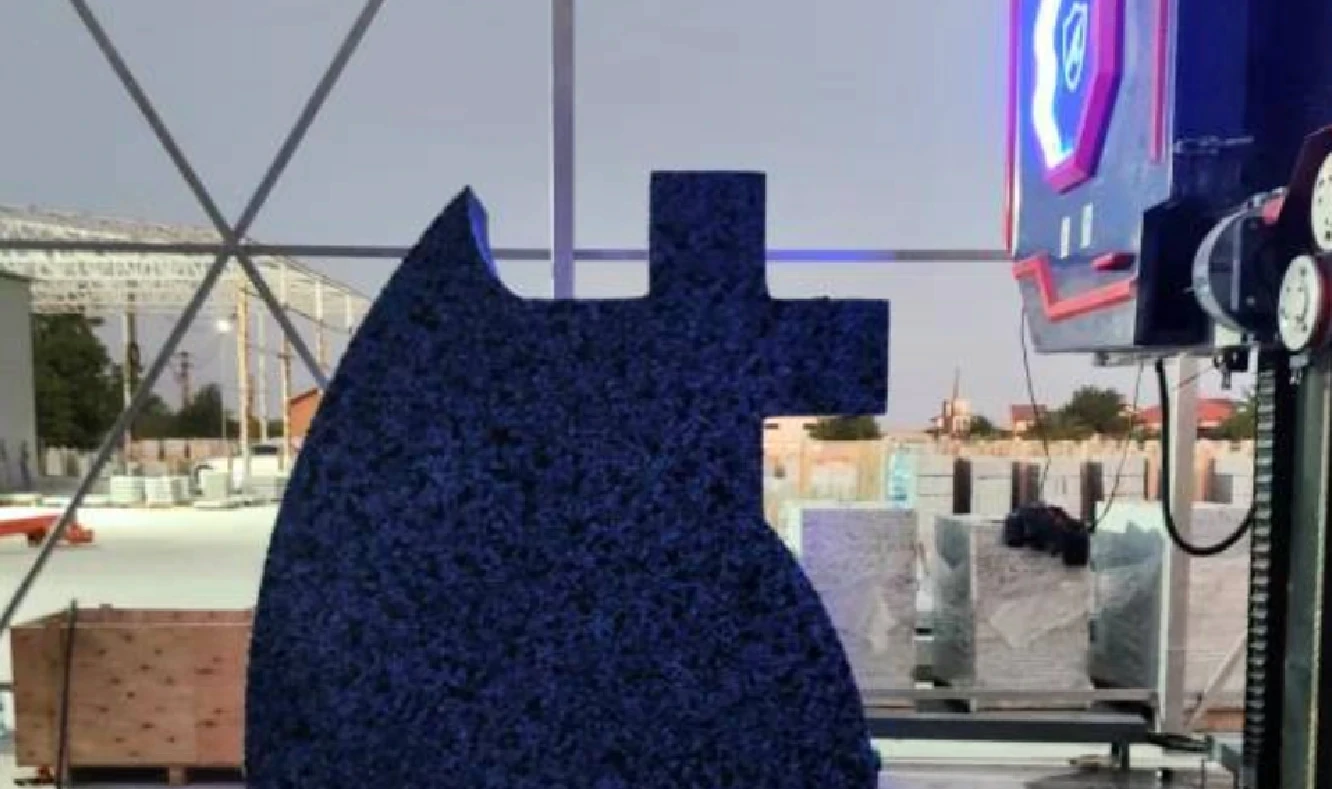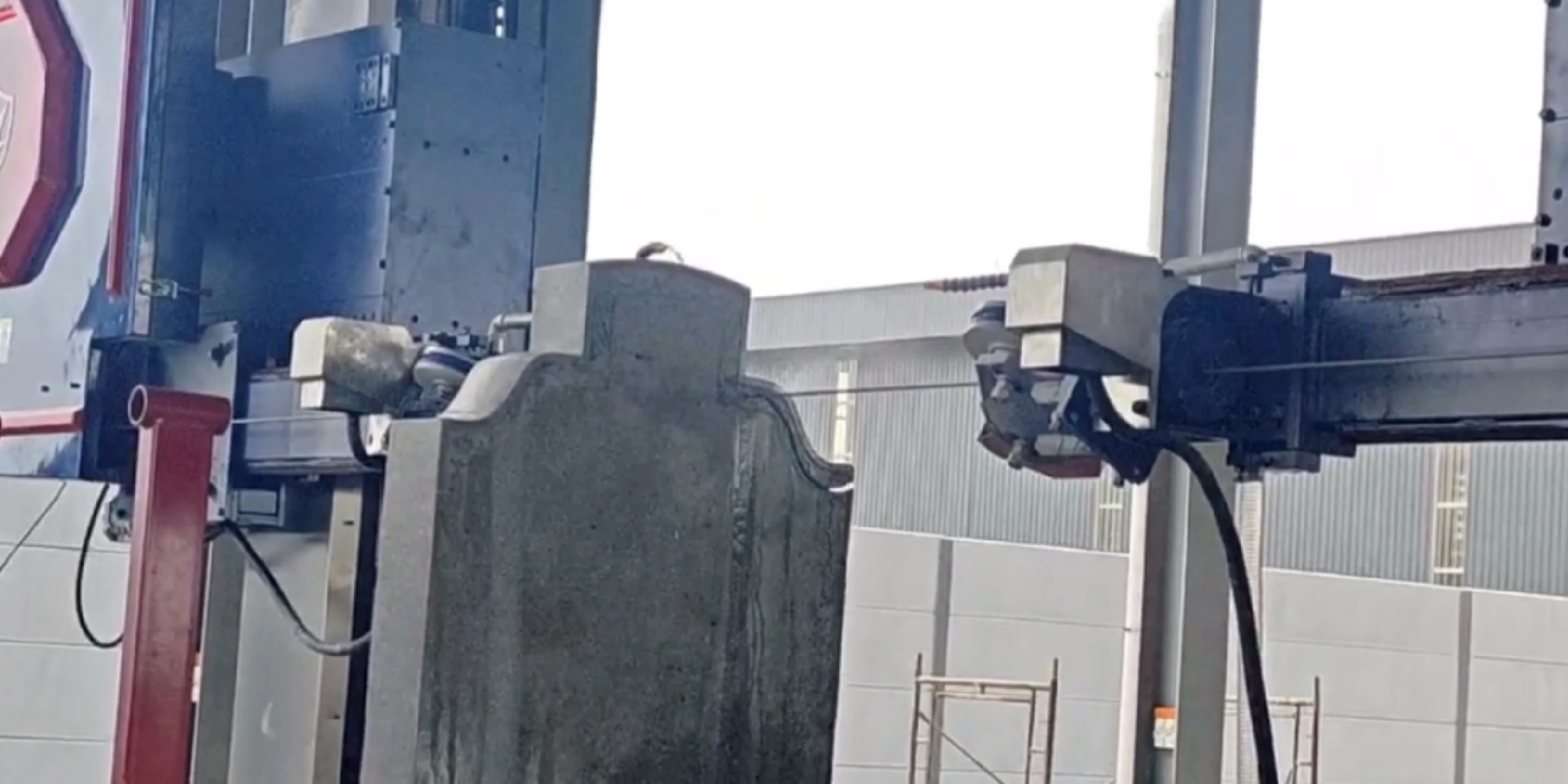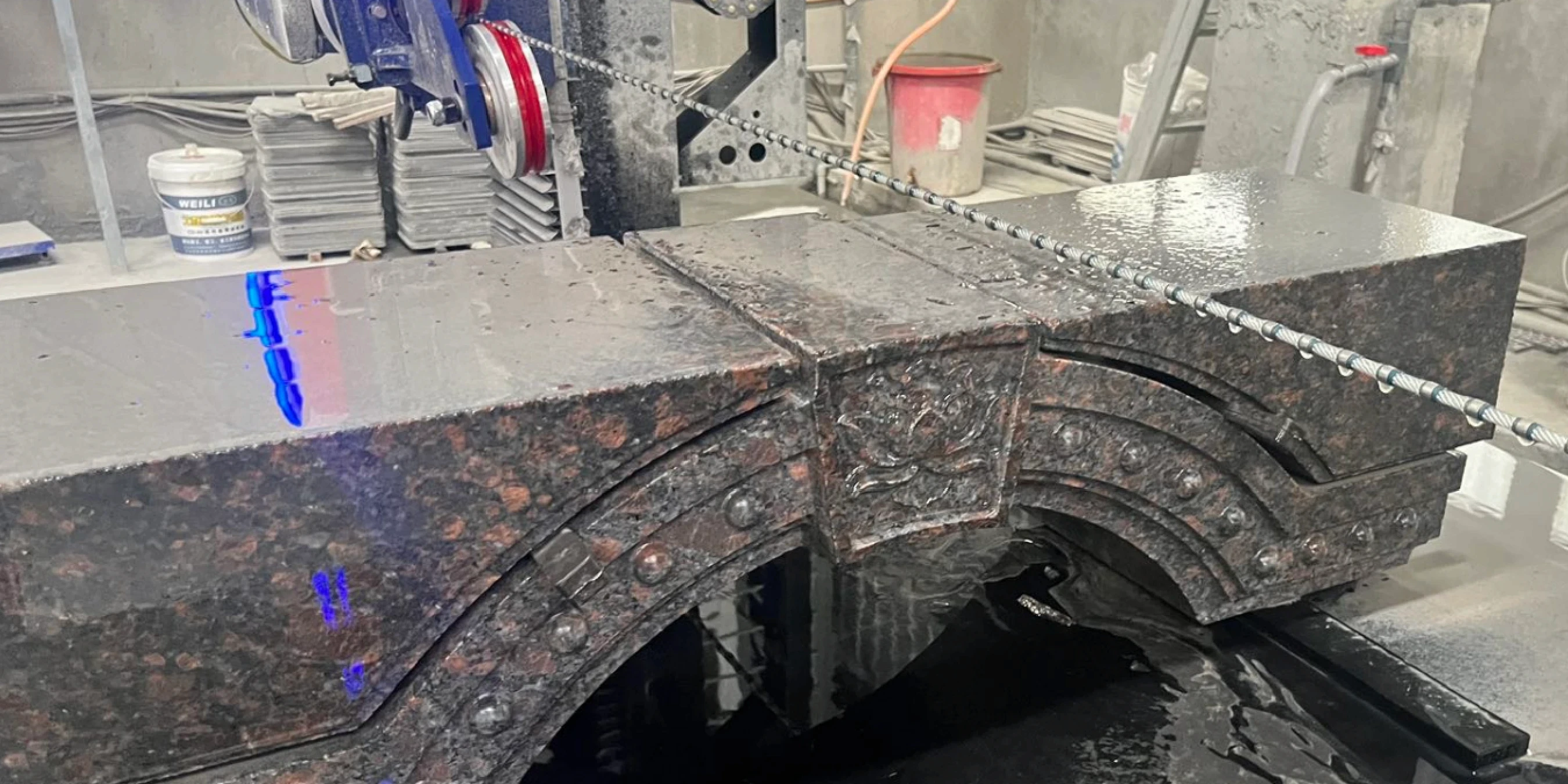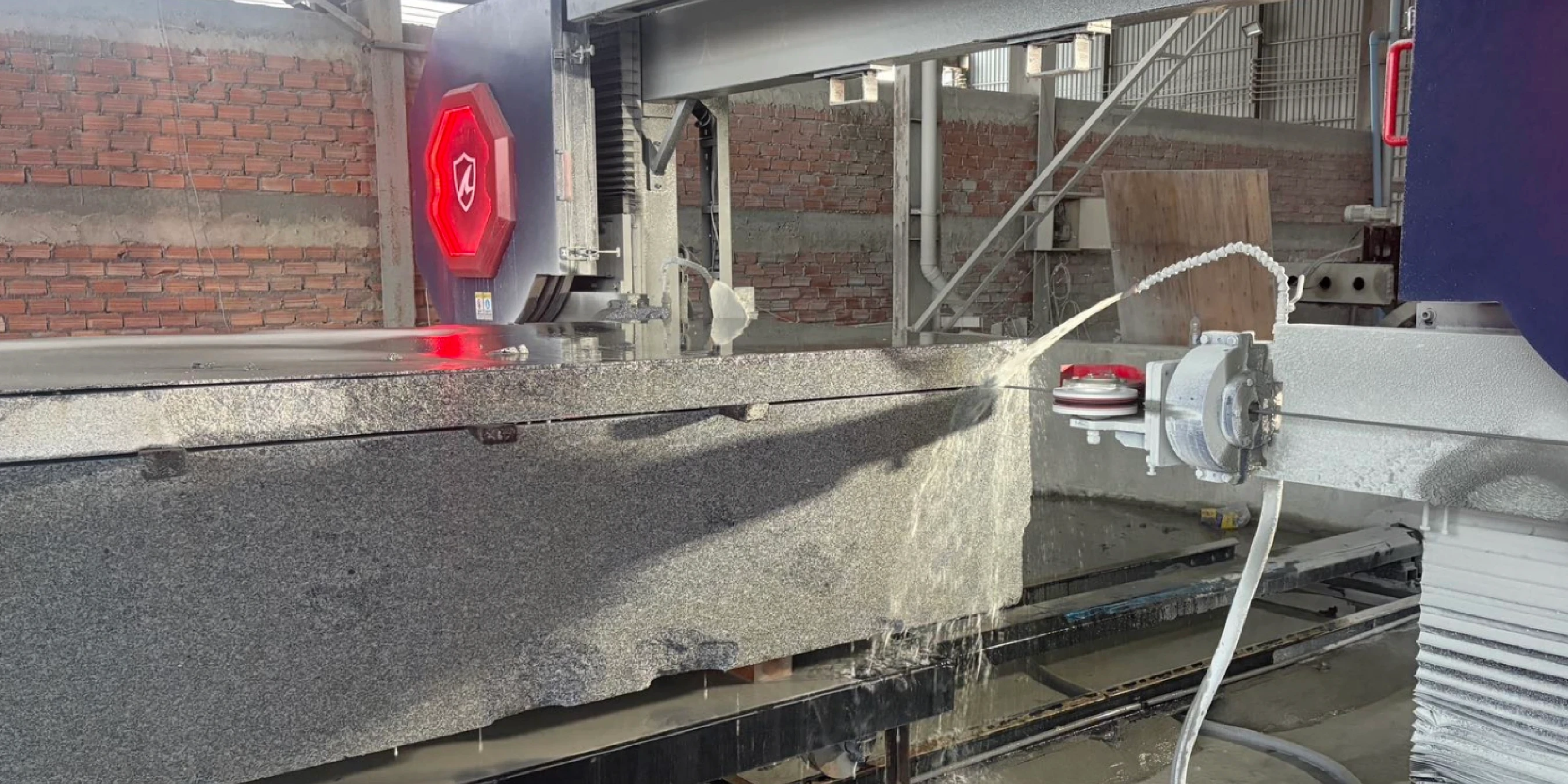Hi, this is Lizzy from Dinosaw ( Not a Robot ). Which Machine ( model ) do you want? Please WhatsApp us now
Learn CNC diamond wire saw techniques for custom monument cutting. Achieve 90% higher precision, 300% faster production. Complete equipment selection & operation guide.
CNC diamond wire saws deliver 90% higher precision and 300% faster production than traditional monument cutting methods. Today's memorial stone fabricators achieve complex curved cuts, multi-angle profiles, and intricate designs that conventional equipment simply cannot handle.
Custom monument production hits three major roadblocks: creating precise curved cuts for heart-shaped headstones, keeping quality consistent across batches, and minimizing waste on expensive granite blocks. CNC wire saw technology eliminates all three issues while cutting project completion time in half.
CNC Wire Saw Custom Monument Cutting: Advantages & Applications
Custom Monument Cutting Challenges: Complex Curves, Multi-Angles, Precision Fitting
Traditional band saws fail at curves beyond 15-degree angles, forcing fabricators into expensive hand-finishing work.
Heart-shaped headstones, angel sculptures, and curved memorial benches require continuous radius cuts from 50mm to 2000mm diameter. Wire saw technology holds consistent 1mm tolerance throughout complex geometries, cutting out secondary machining that adds 3-4 hours per piece.
Technical Challenge Examples:
- Curved memorial benches: Continuous 1200mm radius requiring ±0.3mm precision
- Angel wing details: Variable thickness from 25mm to 150mm within single piece
- Multi-tier monuments: Interlocking components with precise joint tolerances
- Beveled edges: 45-degree chamfers maintaining consistent width across curved surfaces
CNC Wire Saw Technical Advantages
- Precision advantage: 1mm repeatability across production runs kills fitting issues during monument assembly. Traditional methods only hit ±2-3mm tolerance, creating extensive hand-fitting work that bumps production time up 40-60%.
- Material conservation: 15-20% waste reduction through optimized cutting paths and minimal kerf width (0.8-1.2mm wire diameter vs. 3-6mm blade thickness). On a typical $500 granite block, that's $75-100 material savings per piece.
CNC Wire Saw vs Traditional Methods Performance Comparison
| Metric | CNC Wire Saw | Band Saw | Hand Tools |
|---|---|---|---|
| Cutting Precision | ±1mm | ±2-3mm | ±5-10mm |
| Surface Finish | Ra 0.8-1.6μm | Ra 3.2-6.3μm | Ra 12.5-25μm |
| Complex Curves | Any radius | Limited to 200mm+ | Irregular quality |
Application Scenarios
Heart-shaped headstones make up 25% of custom monument orders according to memorial industry data. These require continuous curved cuts with smooth transitions between convex and concave sections. CNC wire saws knock these out in 45 minutes versus 4-6 hours using traditional methods.
Angel sculptures and decorative elements need variable thickness cutting—from 15mm wing details to 200mm body sections within the same piece. Wire saw technology keeps cutting quality consistent throughout thickness variations, eliminating the step-cutting approach other methods require.
Wire Saw Machine Selection Guide for Different Needs
Why Choose CNC Wire Saws
Custom monument fabrication demands CNC precision because memorial stones carry emotional weight—errors can't be easily corrected or hidden. Manual and semi-automatic equipment can't achieve the consistency required for multi-piece monument sets where components must fit together perfectly.
Quality guarantee through automation: CNC systems eliminate human error in complex cuts, maintain consistent parameters throughout production runs, and provide documented cutting reports for quality assurance. This automation becomes critical when processing expensive granite blocks worth $300-800 each.
Factory Scale Equipment Recommendation Matrix
| Configuration | Vertical Wire Saw | Standard CNC Wire Saw | Pro Large-Scale Machine |
|---|---|---|---|
| Target User | Small monument shops (1-3 pieces/day) | Medium fabricators (5-15 pieces/day) | Industrial fabricators (50+ pieces/day) |
| Cutting Area | 1000*900*300mm | 2400*2000*1200mm | 3500*1500*2500mm |
| Production Capacity | 1 monument at once | 9 monuments simultaneously | 15+ monuments simultaneously |
| Best For | Custom one-off pieces, local market | Regional suppliers, custom designs | Large contracts, export production |
Need help choosing the right configuration for your production volume?
Our technical experts provide free consultation to analyze your specific requirements and recommend the optimal equipment setup.Contact Technical Expert via WhatsApp
Custom Monument Cutting Operation Process
Step 1: Design File Preparation & Import (CAD, DXF Format Support)
File preparation cuts setup time by 75% when drawings include proper scaling and tool path optimization. DINOSAW CNC systems accept standard AutoCAD DXF files, Rhino 3DM files, and SketchUp SKP formats without conversion.
File Preparation Checklist:
- Drawing scale: 1:1 actual size in millimeters
- Cut path optimization: Minimize wire direction changes
- Material allowances: Add 2-3mm for finishing operations
- Reference points: Establish clear coordinate system
- Layer organization: Separate cutting paths by priority
Step 2: Material Fixturing & Cutting Path Setup
Proper fixturing prevents 95% of cutting errors by ensuring material stability throughout the cutting cycle. DINOSAW installation engineers provide 3-day on-site training covering fixture selection, clamping force distribution, and vibration elimination techniques.Engineers calibrate parameters based on specific stone characteristics and monument geometry.
Step 3: Automated Cutting Execution & Quality Monitoring
Automated quality monitoring prevents defects during cutting rather than discovering them afterward. Real-time sensors monitor wire tension (±5N tolerance), cutting speed variations, and material vibration to catch potential issues before they affect part quality.
Typical cutting cycle: Setup and programming (15 minutes), automated cutting (45-90 minutes depending on complexity), quality inspection (10 minutes). Total cycle time for custom headstone: 70-115 minutes compared to 6-8 hours using traditional methods.
Common Cutting Problems & Quick Solutions
Custom Cutting Quality Issues
| Problem | Cause | Solution | Prevention |
|---|---|---|---|
| Edge Chipping | Excessive speed | Reduce speed | Speed ramping near edges |
| Dimensional Drift | Wire deflection | Increase tension | Proper guide alignment |
| Surface Roughness | Worn wire segments | Replace wire section | Monitor cutting distance |
| Wire Breakage | Excessive tension | Reduce tension | Gradual tension increase |
Equipment Operation Issues
- Program errors: Cause 35% of setup delays in new installations. Most common issues: incorrect coordinate system reference and missing material thickness parameters. Solution: Use standardized setup templates and verify coordinates with manual measurements before starting automatic cycle.
- Fixture loosening: Causes 15% of dimensional errors. Prevention: Apply thread-locking compound on clamp bolts and perform mid-cycle fixture checks for runs exceeding 60 minutes. Critical check points: 25%, 50%, and 75% completion.
Efficiency Optimization Tips
- Cutting sequence optimization: Boosts throughput by 25-30% through reduced setup time between pieces. Start with largest/most complex pieces when wire is sharpest, finish with simple cuts that can handle slight wire wear.
- Batch arrangement: Group similar materials together (all granite, then marble), organize by cutting depth (deep cuts first), and sequence by geometric complexity (complex curves before straight cuts). This minimizes parameter changes and maintains consistent cutting quality.
Safety Operations & Equipment Maintenance
Monument Workshop Safety Requirements
Granite dust exposure requires specialized protection beyond standard workshop safety equipment. Wire cutting generates 60-80% less airborne dust than blade cutting, but still needs proper ventilation systems maintaining negative pressure and particulate filtration to 99.5% efficiency for particles ≥0.3 microns.
Essential safety equipment:
- Eye protection (Z87.1 rated)
- Respiratory protection (P100 filters minimum)
- Hearing protection (NRR 25+ for cutting operations)
- Cut-resistant gloves (ANSI level A4) for wire handling
Work area requires emergency stop systems accessible within 2 seconds from any operating position.
Daily Maintenance & Fault Prevention
Daily maintenance prevents 90% of unplanned downtime when following systematic procedures. Critical daily checks: wire tension calibration, guide wheel alignment, coolant system flow rate (8-12 L/min), and cutting area cleanliness.
Predictive maintenance schedule:
- Weekly: Lubrication of drive systems
- Monthly: Calibration of positioning accuracy (±0.05mm tolerance)
- Quarterly: Replacement of coolant filters
- Semiannual: Professional inspection by certified technicians
DINOSAW Self-Developed CNC System: 5-Minute Operation Mastery
Simplified Operation Interface
DINOSAW CNC systems eliminate programming complexity through intelligent automation that converts CAD files directly into cutting instructions. Operators achieve productivity within 5 minutes of training compared to 40-60 hours required for traditional CNC programming.
The intuitive interface guides users through three simple steps: file import, material selection, and start cutting. No G-code programming, no complex parameter tables, no technical training requirements. This simplification cuts training costs by 85% and enables cross-training of multiple operators quickly.
5-Minute Operation Process:
- Step 1 : Import DXF file via drag-and-drop interface
- Step 2: Select material type from dropdown menu (granite/marble/slate)
- Step 3: Position material and secure with guided fixture setup
- Step 4: Verify cutting path preview and press start
- Step 5: Monitor automatic cutting progress on dashboard
Intelligent Parameter Settings
Intelligent parameter optimization eliminates guesswork by automatically adjusting cutting speed, wire tension, and feed rates based on material characteristics and geometric complexity. The system maintains a database of optimal parameters for over 200 stone types and cutting scenarios.
Automatic parameter adjustment includes:
- Wire speed optimization for material hardness (0.4-1.2 m/s range)
- Tension adjustment for cutting stability (150-220N)
- Coolant flow regulation (6-15 L/min)
- Feed rate modification for surface finish requirements
This automation achieves consistent results regardless of operator experience level.
Click to find more Customer Success Stories by using our cnc wire saw
Frequently Asked Questions
What cutting precision can CNC wire saws achieve for monument work?
CNC wire saws achieve ±0.1mm repeatability across production runs with surface finish quality of Ra 0.8-1.6μm. This precision eliminates fitting issues during monument assembly and reduces finishing time by 70-80% compared to traditional cutting methods. Critical tolerance zones like joint surfaces maintain consistency within 0.05mm variation.
How do wire saw cutting costs compare to traditional monument fabrication methods?
Wire saw cutting reduces material waste by 15-20% and labor costs by 60-75% through automation and precision cutting. Initial equipment investment typically achieves ROI within 6-12 months for facilities processing 50+ monuments monthly.
What types of monument designs are suitable for CNC wire saw cutting?
CNC wire saws handle any 2.5D geometry including curved headstones, beveled edges, and complex profiles.Maximum cutting thickness: varies by machine model (300mm to 2300mm). Ideal applications include heart-shaped memorials, curved benches, angel sculptures, and multi-component monument sets requiring precise fitting.
What training is required to operate DINOSAW CNC wire saw systems?
DINOSAW systems require only 3-5 hours of basic training due to simplified interface and automated parameter settings. No programming knowledge needed—operators import CAD files directly and select material type from dropdown menus. On-site training included with installation covers safety procedures, routine maintenance, and troubleshooting protocols.
Which stone materials work best with diamond wire saw technology?
All common monument stones including granite (hardness 6-7), marble (hardness 3-4), and slate (hardness 3-6) cut effectively with proper parameter adjustment. Granite provides best economics due to high material value and precision requirements. Abrasive stones like quartzite may require more frequent wire replacement but achieve excellent surface quality.
How do I determine the right wire saw machine size for my monument production volume?
Machine selection depends on daily production volume and maximum monument size. Vertical machines suit 1-7 pieces/day (small custom shops), standard CNC handles 7-20 pieces/day (regional fabricators), Pro-series supports 20+ pieces/day (industrial production). Consider maximum monument dimensions and growth projections when sizing equipment.
What maintenance requirements do CNC wire saw machines have?
Daily maintenance takes 15-20 minutes including wire tension check, coolant level verification, and cutting area cleaning. Weekly tasks include lubrication and guide alignment verification. Monthly calibration ensures cutting accuracy. Annual maintenance costs typically run 3-5% of equipment value including consumables, professional service, and spare parts inventory.
Can wire saw machines cut multiple monuments simultaneously?
Yes, larger CNC wire saws cut multiple pieces simultaneously when properly fixtured. Standard machines handle 3-9 monuments per cycle, Pro-series machines process 15-25 pieces depending on size and complexity. Batch processing reduces setup time per piece and maximizes production efficiency for standard monument designs.





























 English
English 中文
中文 Italian
Italian Türkçe
Türkçe Português
Português

